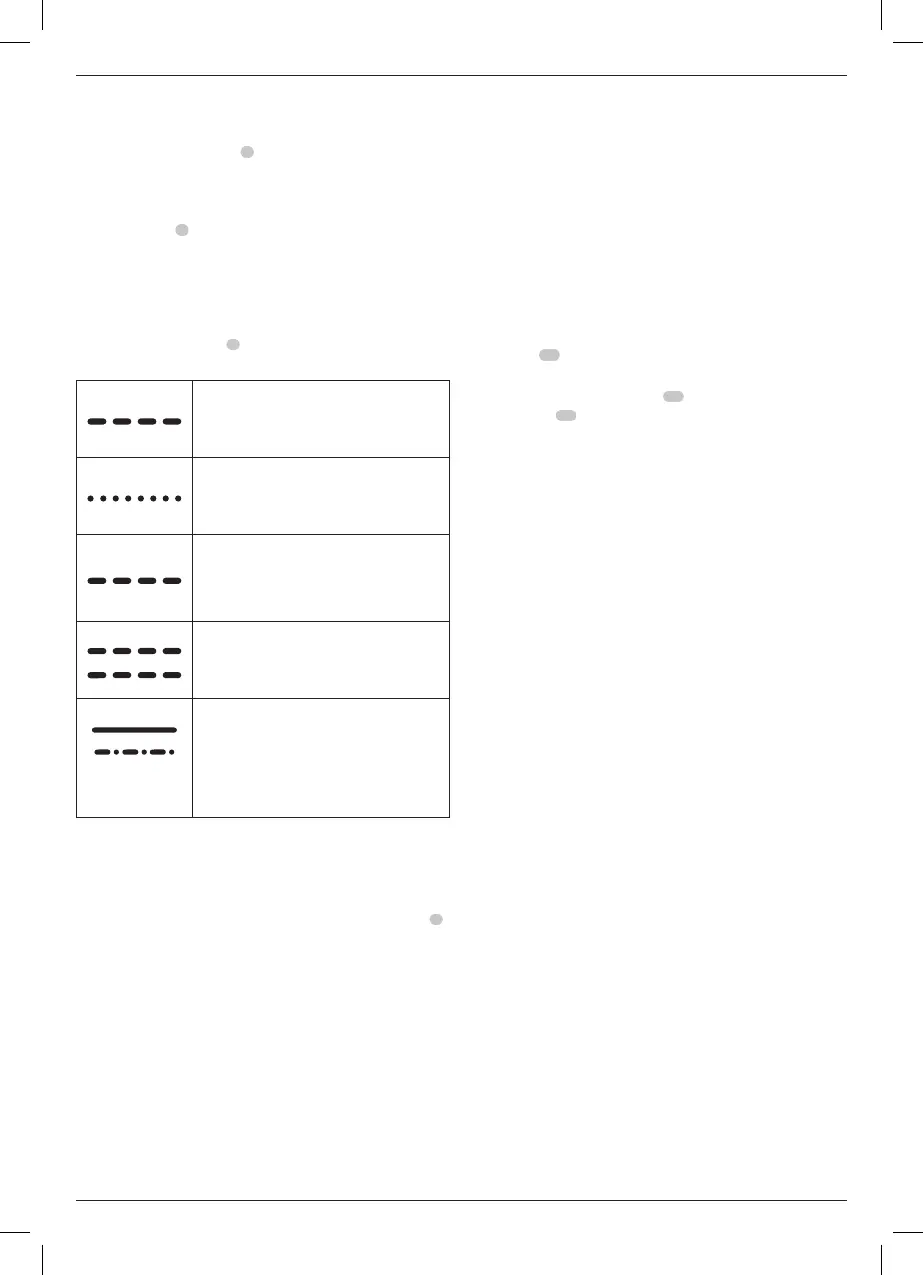46
ENGLISH
5. Release the trigger and raise the stapler from the
worksurface.
NOTE: The tool motor returns to full speed automatically
without the contact trip
7
beingdepressed.
6. Repeat steps 3–5 to actuate the nextstaple.
Multi-Angle Contact Trip (Fig. J)
The contract trip
7
has three notches to allow the user to locate
the wire depending on the desired angle they want to staple,
allowing the user to drive the staple at angle to the wood grain
up to 45degrees.
Headlights/LED Indicator (Fig. A)
There are LED work lights
9
located on the front of the tool on
each side of themagazine.
LOW BATTERY
Replace battery with a chargedpack.
HOT PACK
Let the battery cool or replace it with a
coolpack.
JAM/STALL CONDITION
Rotate the stall release lever torelease.
Refer to Stall Release or Clearing a
JammedStaple.
HOT TOOL (Both LEDs Flashing)
Let the tool cool down before
continuinguse.
or any other
combination.
ERROR
Reset tool by removing and reinserting
battery pack or cycling trigger lock-off.
If error code persist, take tool to an
authorised
servicecenter.
Stall Release (Fig. K)
If the stapler is used in harder material where all available
energy in the motor is used to drive a fastener, the tool may
stall. The driver will not complete the drive cycle and the jam/
stall indicator will flash. Rotate the tool free stall release lever
8
on the tool and the mechanism willrelease.
NOTE: The tool will disable itself and not reset until the battery
pack has been removed and reinserted. If the driver does not
automatically return to the home position, proceed to Clearing
a Jammed Staple. If the unit continues to stall please review
the material and fastener length to be sure that it is not too
rigorous an application. The stapler could also be overheated
and needs time to cool before furtheruse.
Clearing a Jammed Staple (Fig. A, L)
WARNING: To reduce the risk of serious personal
injury, disconnect battery pack from tool before
making any adjustments, changing accessories,
servicing, or moving the tool. Such preventative safety
measures reduce the risk of starting the toolaccidentally.
CAUTION: When removing a jammed staple, DO
NOT orient the stapler with the nose up or with the
battery foot up. Positioning the stapler this way makes
the jammed staple or pieces of the staple more likely to
be ingested into the stapler. If any portion of a staple is
ingested into the tool, the staple should be retrieved by
removing the topcap.
If a staple becomes jammed in the nosepiece, keep the tool
pointed away from you and follow these instructions toclear:
1. Remove battery pack from tool and engage trigger lock-off.
2. After laying the tool on its side, slide the spring-loaded
pusher
12
to the base of the magazine to lock it into place
and unload staplestrip.
3. Rotate the magazine release
11
and rotate the
magazine
10
forward.
4. Remove jammed/bent staple, using pliers ifnecessary.
CAUTION: If any portion of a staple is ingested into
the tool, the staple should be retrieved by removing the
topcap.
5. If the driver is in the down position, rotate the stall release
lever on the top of thestapler.
NOTE: If the driver will not reset after rotating the stall
release lever, manually resetting the blade with a long screw
driver may benecessary.
6. Rotate the magazine back into position under the nose of
the tool and close the magazine releaselever.
7. Reinsert batterypack.
NOTE: The tool will disable itself and not reset until the
battery pack has been removed andreinserted.
8. Reinsert staples into magazine (refer to Loading theTool).
9. Release the pusherlatch.
10. Disengage the trigger lock-off when ready to
continuestapling.
NOTE: Should staples jam frequently or the driver continually
fail to reset, have tool serviced by an authorised
servicecentre.
Cold Weather Operation
When operating tools at temperatures below freezing:
1. Keep tool as warm as possible prior touse.
2. Actuate the tool 10 or 15 times into scrap lumber
beforeusing.
Hot Weather Operation
Tool should operate normally. However, keep tool out of direct
sunlight as excessive heat can deteriorate bumpers and other
rubber parts resulting in increasedmaintenance.
MAINTENANCE
Your
power tool has been designed to operate
over a long period of time with a minimum of maintenance.
Continuous satisfactory operation depends upon proper tool
care and regularcleaning.
